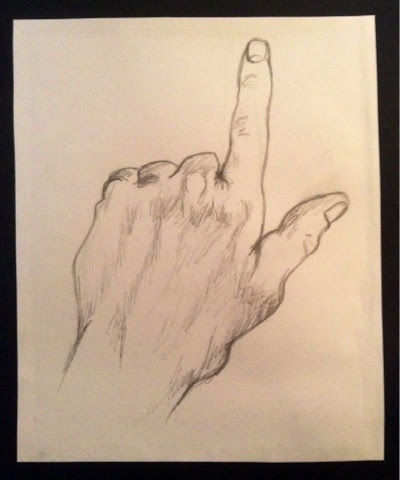Ever since looking at the works of Alasdair Thompson I have tailored my reflections project to personal reflection and have come up with the idea of memory preservation and reflection on the past. By looking at the garments which Alasdair has produced in marble as part of his 'identity' collection, I have become increasingly intrigued by this idea of preserving a special item which will last forever, perhaps something from the past. However, although I have practised carving into stone, I am not specialised enough to do such a piece on a large scale. Therefore I have improvised and have decided to preserve garments in plaster. I prefer this idea as the garments remains inside of the substance which is protecting it. As a result the garment remains alive forever. I have used Alison Watt in combination with this idea as she looks more closely at the folds in the fabric and their delicacy. As a result, the plastered pieces that I produce are both in the style of Watt and Thompson.
To create the plaster I used 3 parts water and 1 part plaster as well as PVA glue to allow the combination of both substances to bond easier to the fabric.
I mixed the plaster in using my fingers to mould it together.
This is how I created the practise pieces which appear on my Alison Watt A1 page. Once I had created the plaster mix, I needed to decide quickly which garments and pieces of fabric I wanted to use, before the mix set solid. I firstly coated a large piece of Calico in order to show the folds in fabric and experiment with position and texture. This can be seen below:
Once the fabric had been dipped in the mix, I moulded it into place and added the folds that I wanted. To create depth and added texture I placed screwed up pieces of paper underneath to add height. I left the fabric to dry for at least 48 hours before mounting it onto a plain white board to give the fabric a presence like Alison Watt.
Once I had completed these practises of using just fabric, I tried using a personal garment. I decided upon a baby grow of my new-born nephew. I thought this would be an emotive piece as there are many emotions surrounding such a garment.
After seeing such a garment preserved beautifully with all of its natural features, I decided that this is definitely an idea to use in my final piece. I like how the garment just looks as if it has been thrown on the floor and is in a natural position. This is what I aim to portray when creating such pieces. By using such a technique, I want to preserve articles of clothing which have a personal meaning to me. And then from there I hope to draw from these pieces. Therefore I can begin to build together an idea of a final piece which surrounds the idea of preserving objects/garments and drawings memories.





































 I decided to create a sculpture in the shape of a cube and I wanted to make this cube personal with a real meaning behind it like the one behind Alasdair Thompsons work. I have annotated my page, however I shall elaborate further on this blog. The reasons behind choosing the shape of a cube came from my wish to incorporate reflectivity into the stone. I wanted to use a shape that had both true meaning and is a symbol in its own right. I decided to allow the cube to reflect every member of my family by carving the first letter of their first name into each side. But looking closely, this cube also resembles that of a baby's building block which would normally show the letters of the alphabet or numbers. By doing this, the cube is no longer just an object but rather a symbol of unity and family connection and this I feel shows true personal reflectivity.
I decided to create a sculpture in the shape of a cube and I wanted to make this cube personal with a real meaning behind it like the one behind Alasdair Thompsons work. I have annotated my page, however I shall elaborate further on this blog. The reasons behind choosing the shape of a cube came from my wish to incorporate reflectivity into the stone. I wanted to use a shape that had both true meaning and is a symbol in its own right. I decided to allow the cube to reflect every member of my family by carving the first letter of their first name into each side. But looking closely, this cube also resembles that of a baby's building block which would normally show the letters of the alphabet or numbers. By doing this, the cube is no longer just an object but rather a symbol of unity and family connection and this I feel shows true personal reflectivity. 












